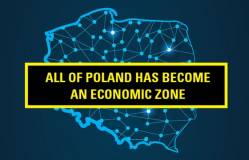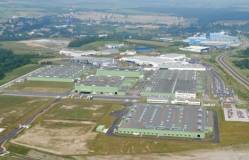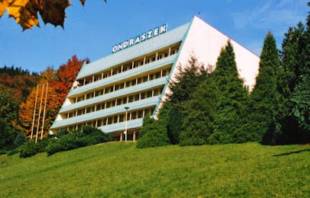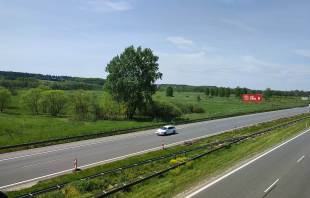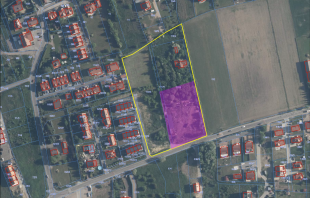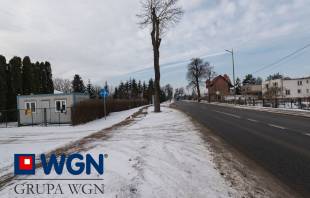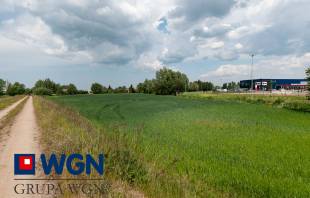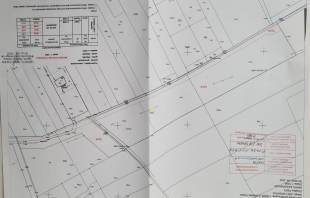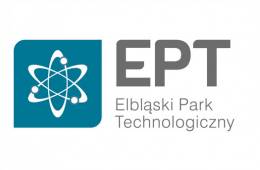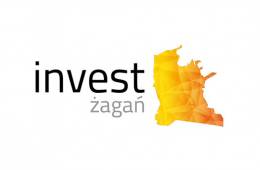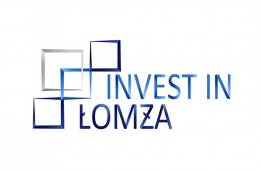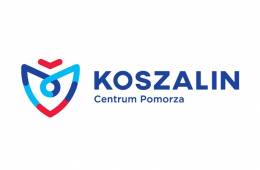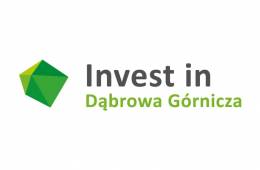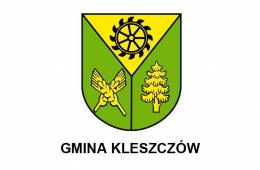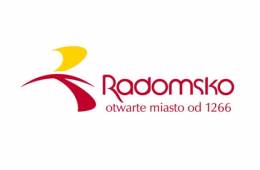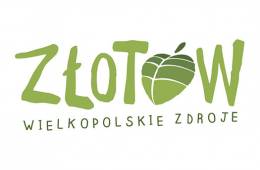The last 12 months have given us anniversaries, a boom on the storage space market, and a record number of investments in the special economic zones. The year 2014 has also proved to be a year of change. Whether for good or bad, we will probably find out in 2015.
It was a year of anniversaries and summaries related to them. We celebrated 25 years of democracy and free economy, 15 years of our membership in the North Atlantic Treaty Organization and 10 years in the European Union.
“At the end of 1990 the foreign investments in Poland reached USD 109 million, and today it is close to USD 300 million. The businesses with a share of foreign capital are 16% of Polish companies, but they have two thirds in Polish export, employ one third of Polish employees and make 35% of all investments in tangible assets,” said Lech Wałęsa during the European Economic Congress 2014.
Special year in Special Economic Zones
2014 will undoubtedly come down in history is one of the best years for Polish special economic zones. The first six months produced historic results. This is a result of the changes that the investors had to face after 1 July 2014 when the state aid was lowered in most voivodships in Poland.
By the end of June 2014 438 permits allowing to carry out projects on the territories of the special economic zones (SEZs) in Poland were granted. This means that new investments reached over 170% more that in 2013. The entrepreneurs declared the realization of the investments worth almost PLN 22 billion and creation of over 20,000 new jobs.
“The year 2014 was a year of many changes in the EU regulations concerning state aid, which have a considerable influence on the regulations applying to the zones. The reduction of the state aid after 30 June 2014 was motivating for investors – within half a year they received 70% more permits than during the whole year 2013 and the value of the declared investment was over 3 times higher. Since 1 July however, due to the lack of national regulations adapted to the EU regulations, there have been no permits granted. So we can assume that the increase in investments was largely influenced by the change of the regulations,” says Marek Sienkiewicz, Manager in the Special Economic Team at Deloitte.
After 1 July there were a few months of silence and the managements of the zones were waiting impatiently for a new government order changing the level of the state aid in the zones, which finally became effective at the end of November. Yet this is not the end of changes in the SEZs. The government issued an order that simplifies the incorporation of private land into SEZs. At the same time the government started working on an amendment to the Special Economic Zone Act which would e.g. extend the range of the actions taken by their management and include the creation of clusters, or the cooperation with higher secondary schools and universities to adjust the offered courses and programs to the employers’ needs. More detailed information concerning the changes in the functioning of special economic zones are in the text „Time of change for Special Economic Zones” (p. 20).
Investment areas: A good year for buyers
The year 2014 proved to be a good year for the real estate market in the area of both commercial and housing projects. A forecast prepared by Colliers International indicates there is a chance that by the end of 2014 the value of transactions will have exceeded the value from 2013. Land for housing projects and commercial real estate for office and trade purposes are particularly popular.
“The investors have most often analyzed and purchased land for housing projects. For this type of investment they spent 70% of their money, for 25% of their funds they bought parcels for offices and commercial facilities, and the remaining 5% was used to buy land for warehouses. The number and value of the transactions carried out in 2014 show that it was a very good time for the investment land market. However this does not mean a return to the upward trend from before 2009 but only a consistent stabilization. Financially strong and healthy development companies and investment funds are the main source of momentum for this sector of the real estate market,” believes Emil Domeracki, Senior Associate at Land Department of Colliers International.
Companies have also had an easy access to funds for financing those purchases due to new financing institutions on the Polish market.
“The changes on the investment markets and the interest of new funds in Poland made a lot of players on the commercial real estate market less cautious with the money for securing new locations for industry and storage projects. At the same time they concentrated their attention on the places where the market is less saturated and the customers are potentially interested with new locations,” says Michał Sikora, Land, Technical and Special Economic Zone Specialist, Cushman & Wakefield.
Another chance for the buyers was the land owned by companies with credit problems, especially Spanish investors, including the land of the former Pollena in Praga district in Warsaw, bought by Okam Capital.
“In 2014 a large number of projects whose owners are having difficulty in paying large credits have been put up for sale. In such cases the transactions can have the form of a simple sale, one may expect that a consortium is established, or that the credits are taken over,” explains Emil Domeracki.
In 2014, especially in Warsaw, one can notice a disturbing tendency concerning perpetual usufruct. There was a lot of hype around two investors who started a dispute over the regulations related to perpetual usufruct. The first case concerned the real estate belonging to the company Griffin in 29 November Street in Warsaw. The municipality of Warsaw denied the developer the perpetual usufruct of the land located near the Łazienki Palace due to the improper use of the real estate. The company came to possess the land by taking over the assets of the company Parkview Terrence, which had demolished 19th century barracks where it had intended to build apartments. The municipality considered the demolition of the buildings illegal and terminated the perpetual usufruct. At present the case is pending a decision from the Court of Appeal in Warsaw. Additionally, Griffin Group notified about the investment dispute between the Polish administration and itself.
Another dispute concerns the stadium of the sports club Skra. Here Global Partners Investment Fund (GPIF), the owner of the stadium, issued a plea of nullity to the Supreme Court. The investor does not agree with the decision of the Court of Appeal which denies GPIF a prolongation of the perpetual usufruct since the company let the stadium of the sports club Skra in Warsaw fall into ruin. The investor had planned to modernize the stadium and build around a water park, apartment and office blocks.
Both cases may undermine the sense of security among the investors who buy land under perpetual usufruct.
“The verdict in the case of Skra means that the owners of the houses, shops, citizens or companies that possess a real estate under perpetual usufruct cannot be absolutely certain that Polish courts will confirm the obligation of the owner of the land to prolong the perpetual usufruct. The present situation creates a level of uncertainty that is unacceptable for the owners of real estates, no matter if it about the property of houses, shops, offices, factories or whether they belong to Polish citizens or companies, or to foreign investors,” believes Michael Holland, the representative of the SKRA consortium.
Poland attractive to foreign investors
This year was very good in terms of foreign investors. New investments took place not only due to the change in the conditions for receiving state aid, but also the opinion that Poland is a good place to invest. Especially at the time of unrest in Ukraine Poland seems to investors an island of stability.
“It was a fairly good year for investors, but it is not over yet. The total value of the projects carried out by the Agency until November is truly impressive as it reached EUR 1797.74 million. The value of the projects carried out this year is almost a billion higher than during the same period a year ago,” says Monika Piątkowska, Vice President of the Polish Information and Foreign Investment Agency.
This year a lot of interest was paid to the investment of the company Volkswagen, the construction of a new crafter factory. In spring there were still only speculations where the German investor would locate it, then the final decision was made and the choice was Września.
“It is crucial for Poland to attract investments related to production, especially those involving highly advanced technology, as well as service projects. The production-related investments, such as that of Volkswagen in Września near Poznań, usually bring a lot of capital into Poland. However the contribution of the concern to the development of the region will be greater than that. Apart from its factory smaller businesses of the suppliers will appear, new roads, car parks, and other necessary infrastructure will be built. The construction of the new factory of VW began in the middle of November. The value of the project is EUR 800 million and it will employ 2300 people,” adds Monika Piątkowska.
Although it is still too early to talk about the results of the whole year 2014, the comparison of the achievements of the Polish Information and Foreign Investment Agency (PIFIA) from November 2013 and 2014 is an optimistic forecast for the total result. In November 2013 PIFIA completed 42 projects with a total value of EUR 797 million, which were supposed to create over 16,000 new jobs. In November 2014 the Agency recorded 47 investments, thanks to which there will be 7,953 new jobs. Their total value is EUR 1797.74 million.
In 2014 Poland has also been regarded as very attractive for investors. The report „Europe’s Investment Attractiveness” prepared by E&Y, shows that foreign investors still consider Poland as the most attractive location for new projects in Central and Eastern Europe. This opinion is shared by 31% of the respondents of the 12th edition of the report. Next there is the Czech Republic (11%) and Romania (9%). According to the data on the year 2013 provided by EY, Poland remains the third country in Europe in terms of the number of jobs created thanks to foreign direct investments (FDI).
Poland is also the leader of the region according to the 9th edition of the survey carried out by the Polish-German Chamber of Industry and Commerce (AHK Poland) and fifteen other German bilateral chambers in the region. It has also taken the first place in the survey on investment attractiveness of the countries of Central and Eastern Europe, in which the respondents were 1400 German investors in 16 countries of the region. This means that it has remained the leader, the position which it first achieved in 2013 and which for several previous years had been held by the Czech Republic.
Another noteworthy achievement is a higher position in the ranking of the World Bank „Doing Business 2015”. For the first time Poland was among the fourth ten countries with the best environment for entrepreneurs, taking the 32th place. In 2011 it was 70th (in 183 countries), and a year before – 45th.
Busy offices and warehouses, commerce a little less so
In the year 2014 the commercial real estate market was dominated by storage and logistics spaces. Some called it the Amazon effect, as a result of the decision made by that company to locate three distribution centers in Poland (in Poznan and Wrocław), which were opened in autumn 2014. Another important event on the market was the beginning of the construction of the first modern logistics park in Eastern Poland. The investor in Lublin is MLP Group, and the storage, production and office facility covers the area of 55,000 sq m. Although experts are careful in their forecasts of the development of the storage market in Eastern Poland, especially due to the conflict in Ukraine, the investment may be the first step in that direction.
The commercial space market has been a little worse this year. The consultancy company Colliers International estimates that the new supply that will have been delivered by the end of 2014 will be 475,000 sq m, which means a decrease of 26% compared to 2013.
The office space market is still developing rapidly, especially in the capital city. At the end of the third quarter of 2014 (data of DTZ) the resources of the modern office area in Warsaw have reached 4.36 million sq m. After the record year 2013 when the office blocks on the market provided 300,000 sq m, the year 2014 will probably bring even better results. There is still the trend of renovating old tenements and converting their interior into offices and modernizing old office premises.
The transaction market also looks interesting this year. The data provided by CBRE show that for the past nine months (till the end of September 2014) EUR 1.8 billion was invested in Poland. However the limited availability of the highest quality commercial real estate increases the investors’ interests in the Czech, Romanian and Hungarian markets.
“The volume of the investment transactions in Poland in 2014 is similar to that from the previous year. Analysts expect a small increase in transactions with a total value of a little over EUR 3 billion, despite the fact that the turnover in the first three quarters of 2014 reached only EUR 2 billion, which proved to be a slightly lower result than the one recorded in the same period a year ago,” explains Łukasz Maciak, Director - Capital Markets, DTZ.
The market in Warsaw still dominates in Poland, although large regional markets such as Wrocław, Poznań or Cracow are doing well too.
“Poland is the most active country on the commercial real estate market from all the countries in the CEE region. The analysis of the 3rd quarter of 2014 shows high activity of investors in the sector of office, logistics and storage real estate. Compared to the 3rd quarter of 2013 the percentage of transactions in both sectors has increased by almost 20%. The subject of approximately 60% of transactions carried out in the 3rd quarter of 2014 was real estate in Warsaw,” comments Joanna Mroczek, Director of Research and Marketing Departments at CBRE.
The most important transaction on the office market is the sale of the office block Atrium 1 in Warsaw, which was sold three months before the planned commissioning. Skanska has sold the third building in the region to a German investment fund – Deka-Immobilien, which acquired the most advanced and environmentally-friendly building in Central and Eastern Europe for EUR 94 million. At the end of the year there have also been many significant transactions. A prominent example is the sale of the office block Metropolitan by Aberdeen Asset Management Deutschland to Deutsche Asset & Wealth Management for almost EUR 190 million. Equally important is the purchase of a high-rise office building Rondo 1 by Deutsche Asset & Wealth Management for almost EUR 300 million.
There has been a lot of activity on the commercial space market, mainly on the key regional markets. Sold was Poznan City Center – a shopping mall built by Trigranit and Europa Capital on a parcel belonging to PKP, with 230 lessees. The mall was bought by the consortium Resolution and ECE for EUR 227 million, which makes it the largest transaction of the year. Another important and successful project in 2014 was the sale of the shopping mall Galeria Kazimierz for EUR 180 million. The buyer was Invesco, which bought the mall from GTC, which owns 12 such facilities. Also the presence of new players on the commercial real estate market is worth mentioning.
The new players on the market are mainly American investment funds such as Amstar, which together with BBI Development invested in Zlota 44 in Warsaw.
„This year has certainly been a good one. First of all there are new players on the Polish market who made an impressive entrance. In June Starwood Capital Group, a leading global investment company, acquired three office buildings: T-Mobile Office Park in Warsaw, Łopuszańska Business Park in Warsaw, and Katowice Business Park in Katowice, and thus invested in our country almost EUR 200 million. This confirms the trend that new buildings are easy to sell, especially if they are built in the right place and are fully rented,” adds Łukasz Maciak.
From the perspective of historical anniversaries, the year 2014 was a good one. The economic position of Poland in Europe is stable; it enjoys the investors’ interests and trust, which we could only dream about 25 ago. The changes on the office, commercial, and storage space markets are also considerable. Modern office blocks or shopping malls are built not only in Warsaw or in large regional cities, but also in towns with up to 100,000 residents. Although the market has been developing slowly this year, it might be considered stable. This year was also particular for the special economic zones, not only due to record investments, but also due to the operational changes.



















